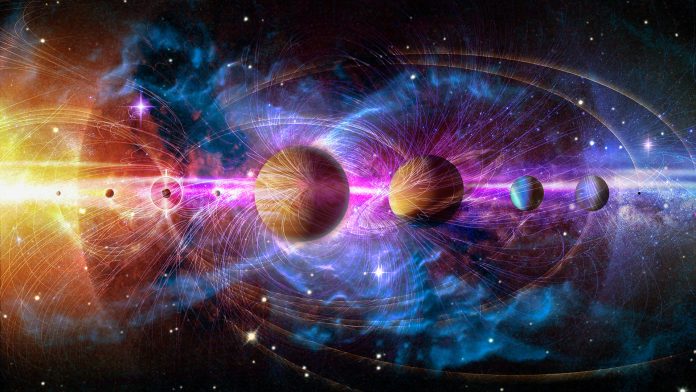Scientists from the Southwest Research Institute (SwRI) have developed a groundbreaking model that has potentially unveiled the formation of our solar system.
The team’s novel solar system formation model suggests that our solar system evolved from rings, potentially explaining the existing inner planetary distribution and the asteroid belt between the inner and outer solar system.
The research, which is published in Nature Astronomy, was led by Dr Rogerio Deienno, an expert in celestial mechanics and dynamical astronomy. His team designed a model where three rings of planetesimals – the building blocks of planets – would form from the swirling disk of gas and dust around the Sun called the solar nebula.
Deienno commented: “As dust particles move slightly faster than the gas around them, they feel a headwind and drift very quickly toward the star. At ‘pressure bumps’ — regions in the disk usually associated with localised changes in disk composition and the size of dust grains — gas pressure increases, gas molecules move faster, and solid particles stop feeling the headwind. That allows dust particles to accumulate at these pressure bumps forming rings separated by gaps.”
Unravelling the formation of our solar system
There are three pressure bumps in the Sun’s natal disk associated with three different sublimation fronts – regions in the disk where materials of a given chemical composition would become vapour – that correspond to temperatures and distance from the star. They cause pressure bumps at the sublimation fronts of silicate at temperatures over 1,400 Kelvin, water at 170 Kelvin, and carbon monoxide at 30 Kelvin.
The team employed images obtained by the Atacama Large Millimeter/submillimeter Array (ALMA) observatory that displayed a disk around a young star in exceptional detail, which inspired their ring-based model of how our solar system formed.
The model assumes millimetre- to centimetre-sized dust and pebbles accumulate at pressure bump locations, collapsing due to their collective gravity into 100-kilometre-sized planetesimals. The new model indicates that these planetesimals would then form three rings: the inner silicate ring, the middle water ring, and the outer carbon monoxide ring, each around a sublimation front.
Deienno said: “As time goes by, the disk temperature cools. This cooling process causes the pressure bumps to migrate toward the Sun, with the first planetesimals forming at the outer edge of each ring. Assuming the disk composition at atomic levels also changes with time, the planetesimal compositions should be slightly different across each ring.”
Simulating the rings
Next, the team utilised supercomputers to conduct a range of simulations, connecting the forming rings of planetesimals associated with the silicate sublimation front – the inner ring – to the growing terrestrial planets.
“Andre Izidoro, the lead author from Rice University, generated the distributions of planetesimals formed in the rings,” Deienno said. “Then I simulated the entire collisional growth process during the gas disk lifetime until the terrestrial protoplanets formed. This allowed us to track the compositional evolution and feeding zones of Earth, Venus and Mars as well as the compositional link between Mars and the main asteroid belt.”
The simulations revealed how our solar system may have formed right down to Venus, Earth, and Mars’s slightly varying chemical compositions and masses. The Earth and Venus analogues collect the most materials forming the bulk regions closer to the Sun, whereas the Mars-like planet was comprised of materials in more sparsely populated regions further from the Sun.
Simulations yielded a region sparsely populated or completely devoid of planetesimals past Mars’s orbit, with some planetesimals from zones inside or directly beyond later moving into the asteroid belt region, colliding after becoming trapped, creating the fragments we know today as asteroids.
“The simulations are even able to explain the different asteroid populations,” Deienno said. “Bodies that are made mostly of silica are remnants of stray objects originating in the region around Mars, whereas asteroids predominantly composed of carbon are likely remnants of stray objects from the region outside the asteroid belt.”
The latter region – which is the middle ring around the water sublimation front – is the feeding zone that creates giant planets, whereas the outermost third ring round the carbon monoxide sublimation front would develop into what is commonly known as the primordial trans-Neptunian disk.









